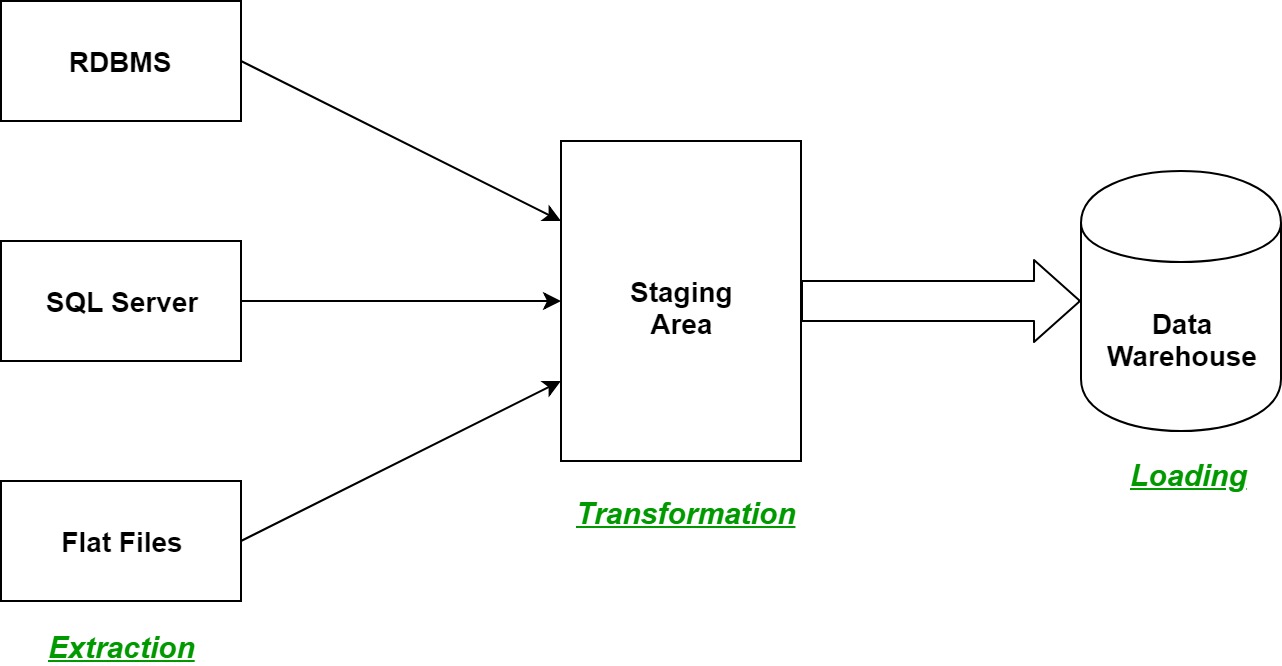Designing and implementing data extraction, transformation, and loading (ETL) processes is a critical step in building a data warehouse or any data integration project. Here are the key steps involved in designing and implementing ETL processes:
- Understand Requirements:
Start by understanding the requirements and objectives of the ETL process. Identify the data sources, determine the desired data transformations and business rules, and define the target data model and structure of the data warehouse. - Source System Analysis:
Analyze the source systems from which data needs to be extracted. Understand the data formats, data quality, data volumes, and the available interfaces or APIs for extracting data from the source systems. Identify the relevant tables, columns, and relationships in the source systems. - Data Extraction:
Develop the extraction process to retrieve data from the source systems. This can involve techniques such as querying databases, using APIs or web scraping, reading flat files, or integrating with other systems. Extract only the necessary data required for the data warehouse to minimize the extraction load and optimize performance. - Data Transformation:
Transform the extracted data into a format suitable for loading into the data warehouse. Apply cleansing, filtering, aggregation, and formatting rules based on the defined business requirements. Handle data quality issues, handle missing or erroneous values, and ensure consistency and integrity of the data. Data transformation can be done using SQL, scripting languages, or ETL tools. - Data Loading:
Load the transformed data into the data warehouse. This involves mapping the transformed data to the target data model and inserting or updating the data warehouse tables. Depending on the design, loading can be done incrementally (adding new data only) or as a full refresh (reloading all data). - Error Handling and Logging:
Implement error handling mechanisms to capture and handle any errors or exceptions that occur during the ETL process. Log the details of the errors, including the source, type, and time of the error, to facilitate troubleshooting and monitoring of the ETL process. - Data Validation and Testing:
Perform data validation and testing to ensure the accuracy and integrity of the loaded data. Validate the transformed data against the defined business rules and cross-check with the source systems. Conduct end-to-end testing of the ETL process to verify its functionality and performance. - Scheduling and Automation:
Create a schedule or automate the ETL process to run at specified intervals or in response to triggers (e.g., new data availability). Consider factors like data volumes, processing windows, and dependencies on other processes. - Monitoring and Maintenance:
Implement monitoring and maintenance processes to ensure the ongoing health and performance of the ETL process. Monitor the execution and completion of the ETL jobs, track data quality metrics, and proactively address any issues or bottlenecks. Regularly review and optimize the ETL process to accommodate changing data requirements and performance improvements. - Documentation:
Document the ETL process, including data lineage, source-to-target mapping, transformations, and business rules. This documentation serves as a reference for future enhancements, troubleshooting, and knowledge transfer.
Designing and implementing ETL processes require a combination of technical skills, data modeling knowledge, and a deep understanding of the source systems and data requirements. ETL tools such as Informatica PowerCenter, Talend, or Apache NiFi can provide visual interfaces and automation capabilities to simplify and streamline the ETL development process.
SHARE
